Essentials of Anatomy and Physiology for Nursing Practice
Student Resources
Answers to Revise Questions
1. Plan a balanced diet for an average 70 kg adult for one day, identifying the main nutrient component of each item (e.g. fat, carbohydrate, protein, vitamins) and number of calories. Please go to the Calorie King website to help you identify the values of each food item: http://www.calorieking.com/foods/
Answer:
A 70 kg male will need approximately 2,464 calories daily (for a male who is 183 cm and has 9% body fat). This would be to maintain 70 kg weight, so it depends on whether the weight is optimal for height and gender. This is a very rudimentary calculation as levels of activity and age can influence this value significantly, as can the degree of body fat.

Another variant:

2. Explain why each component is needed for health and well-being. What are the main sources of each nutrient?
Answer:
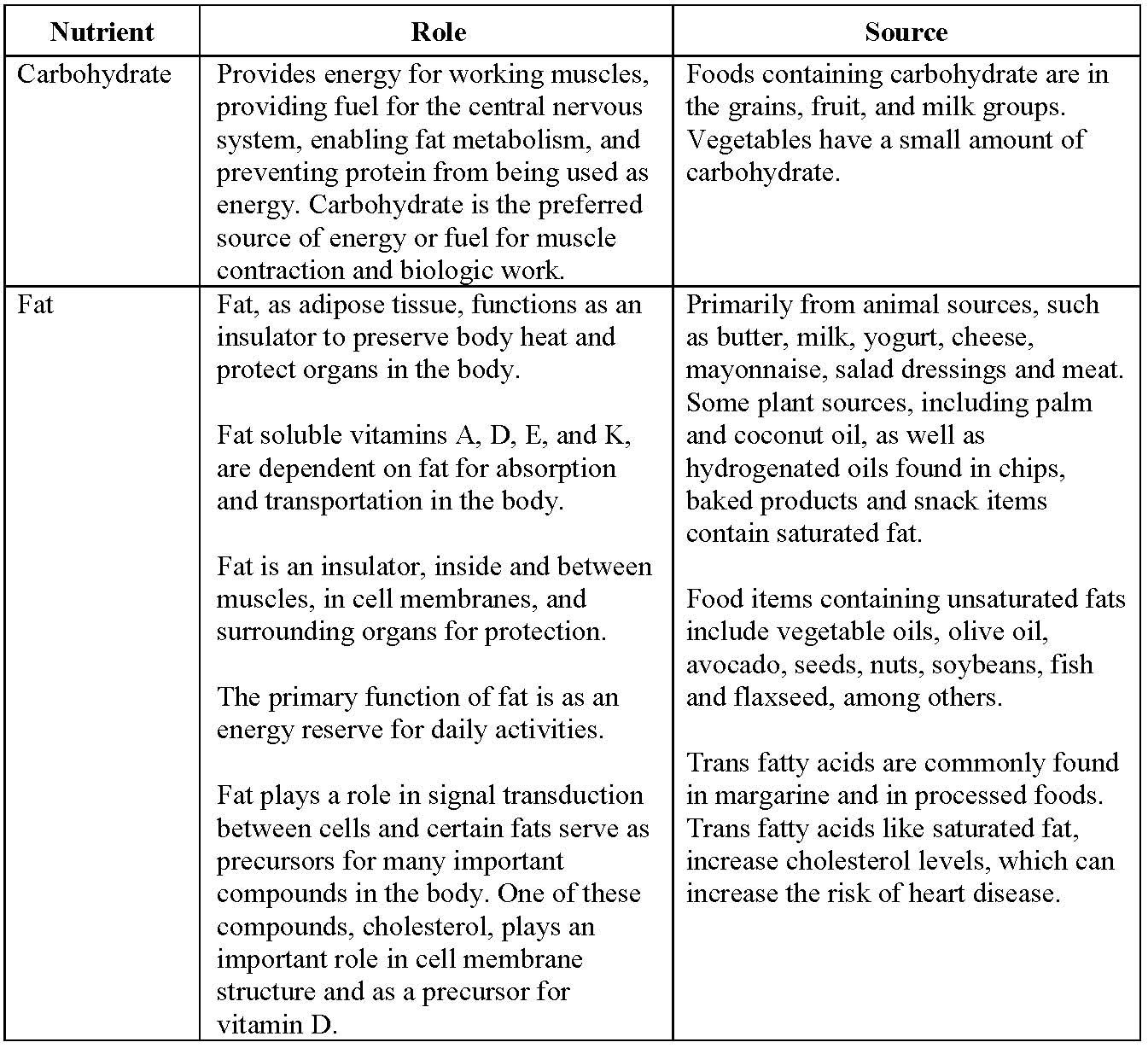
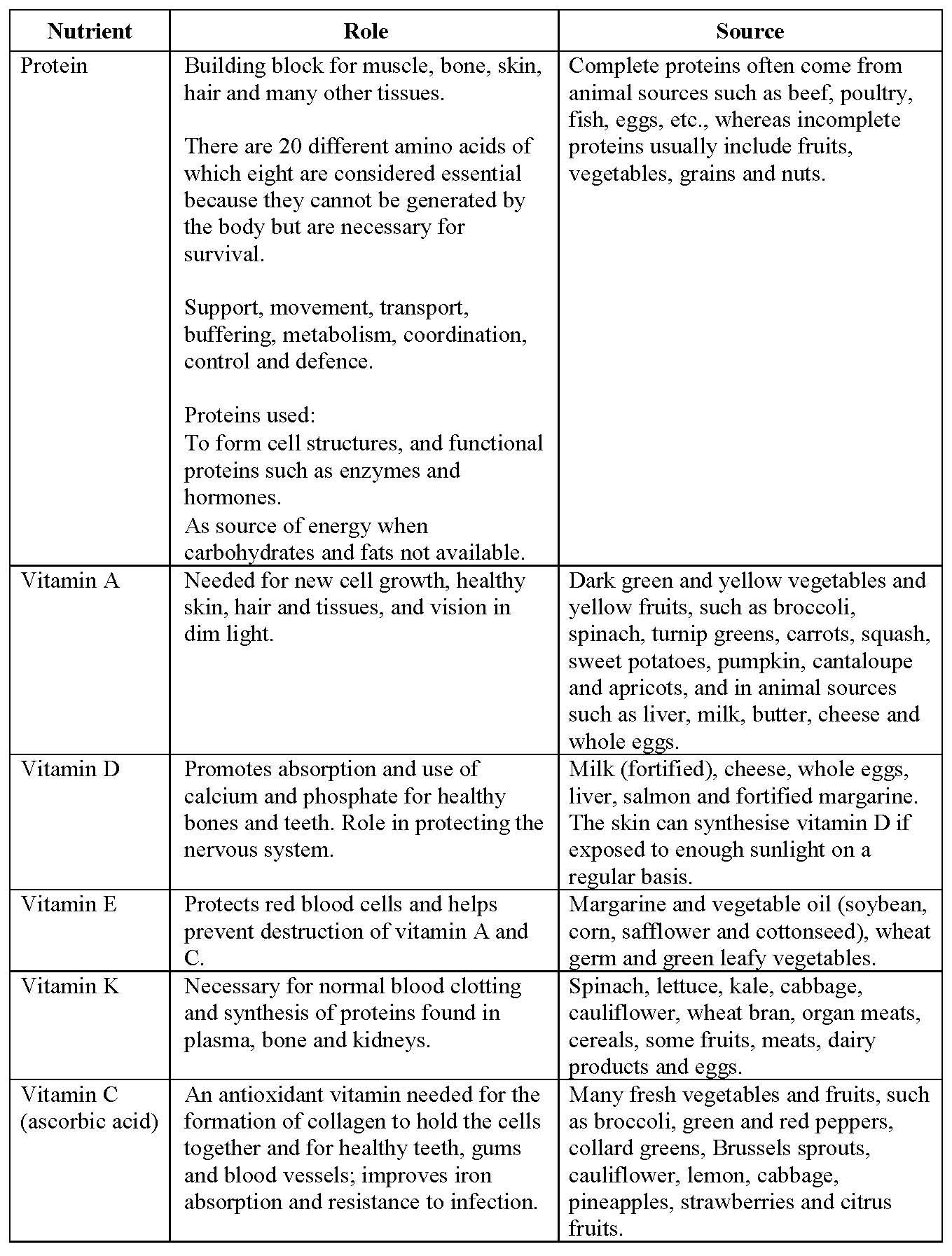
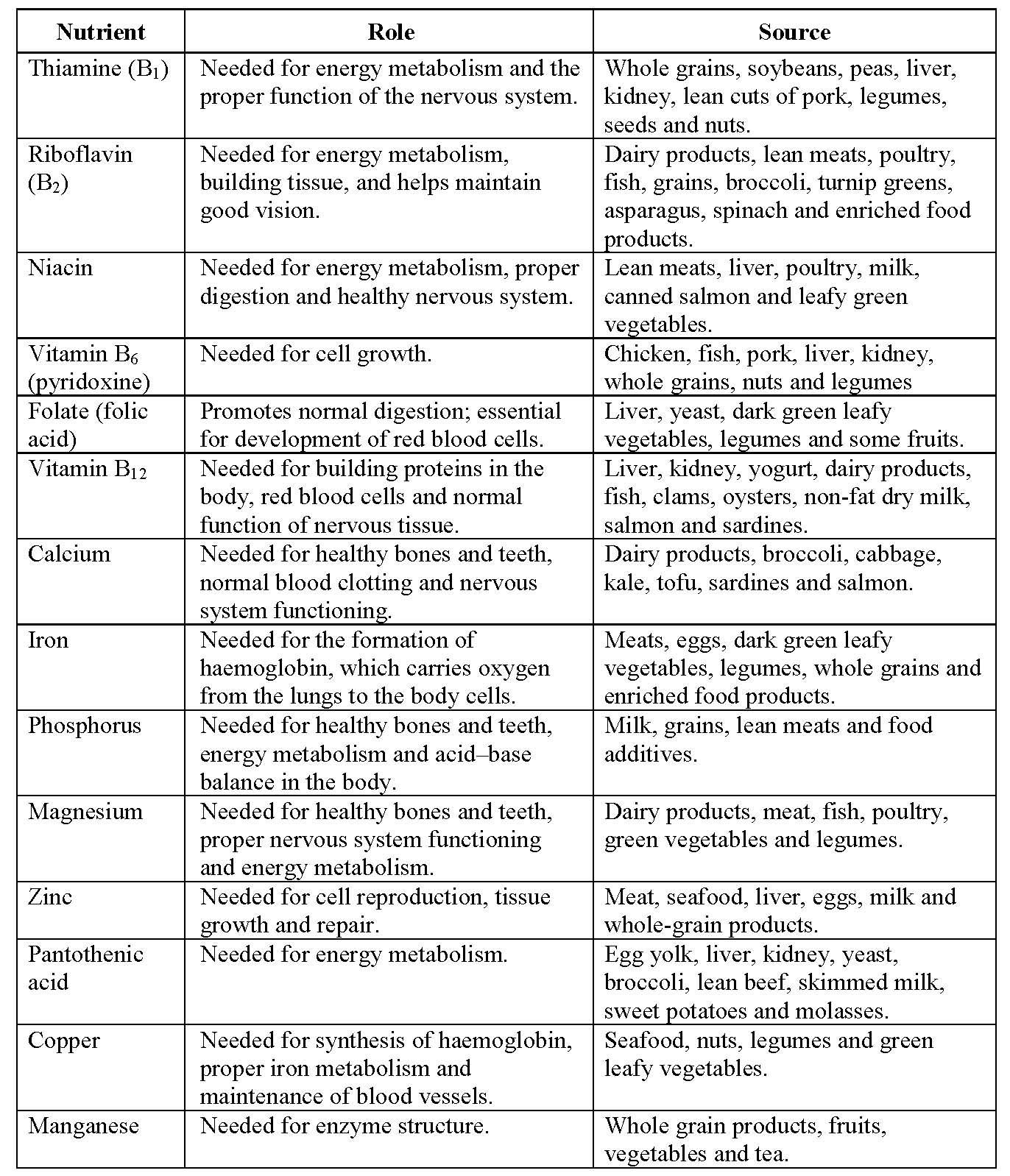
3. Explain how each component is digested, metabolised, stored and eliminated.
Answer:
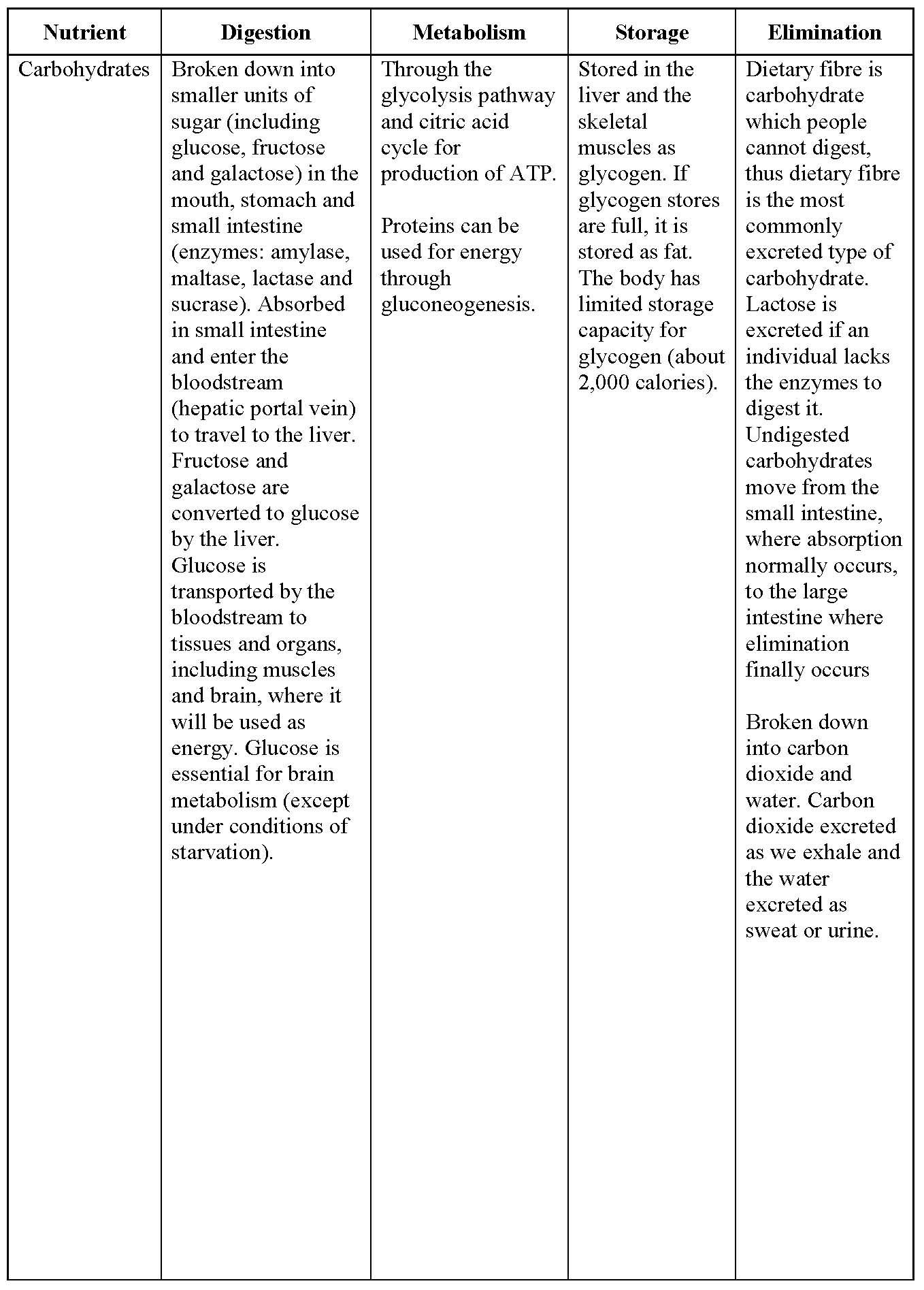
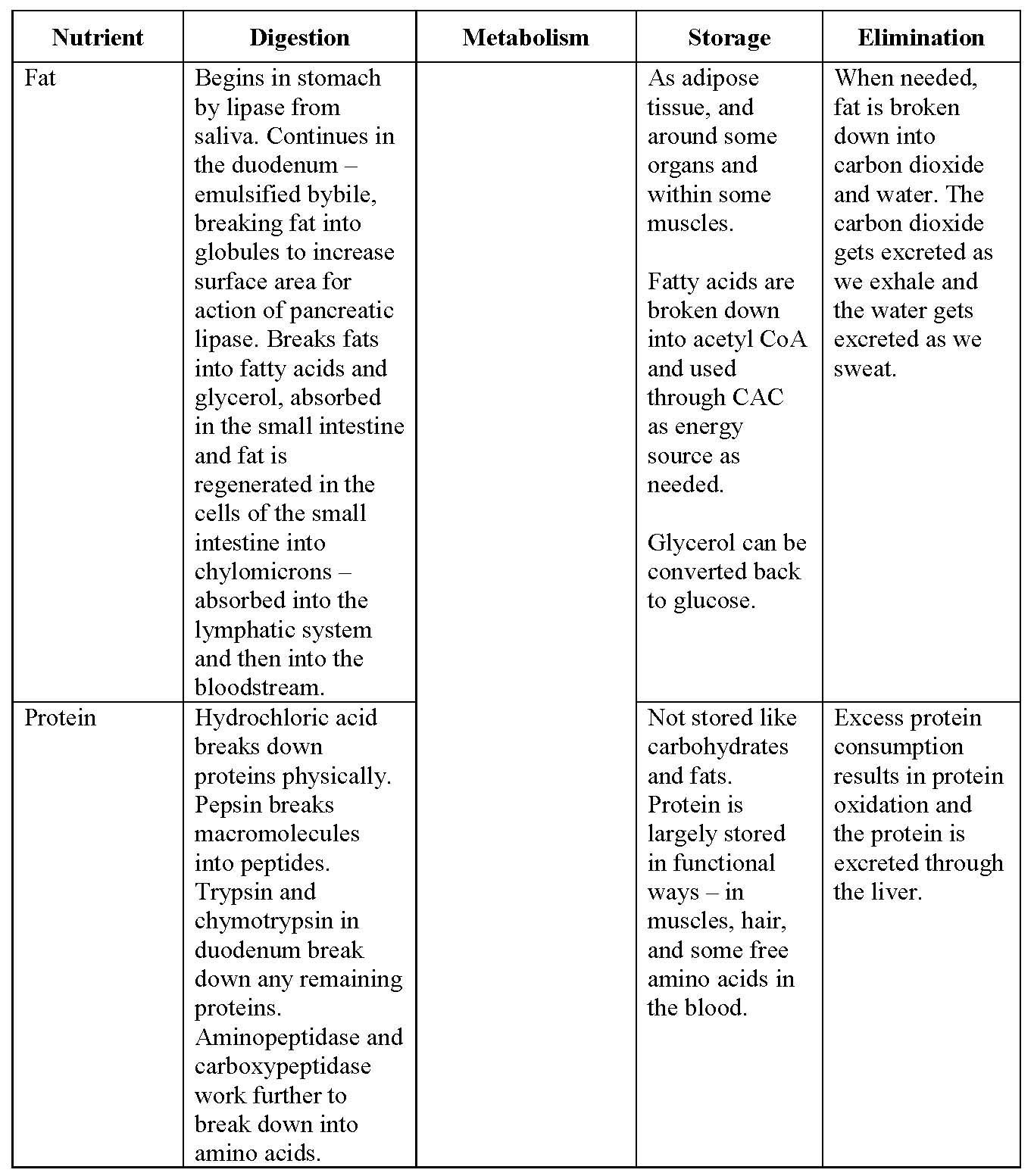
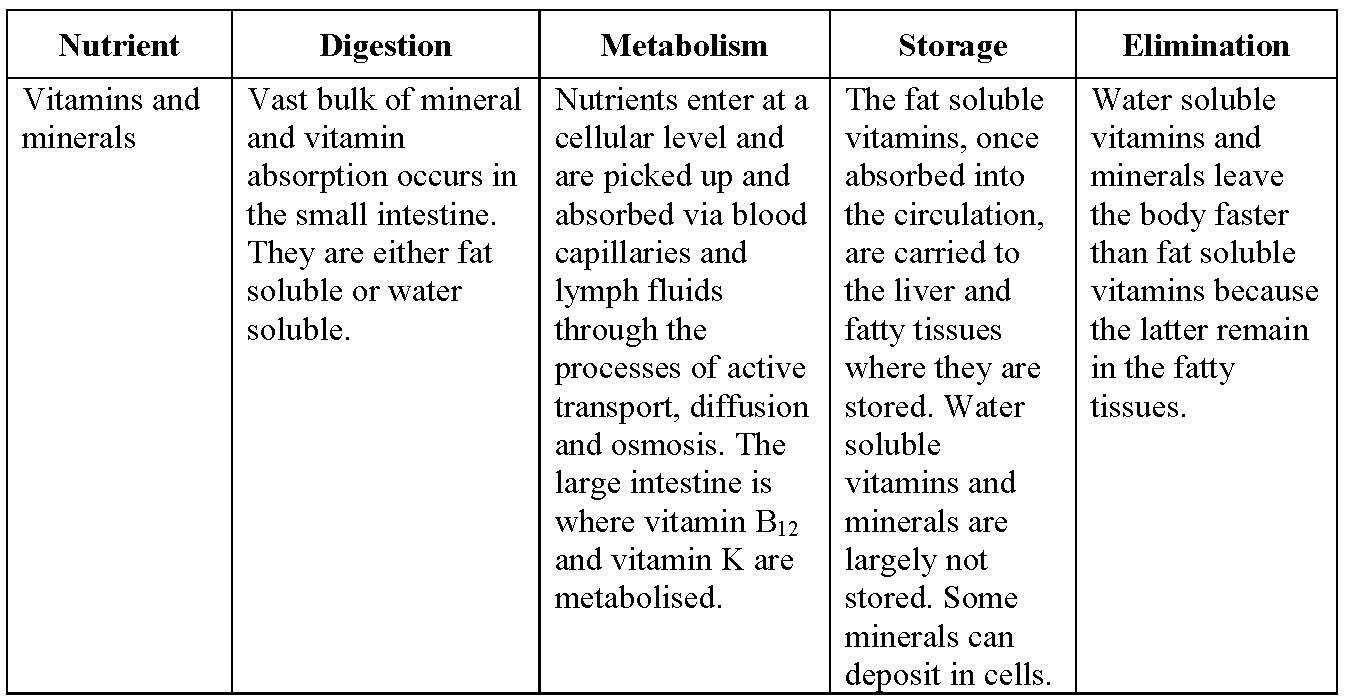
4. What are the factors that influence a person’s ability to maintain a healthy diet and digestive system in society?
Answer:
You should make reference in your response to:
- Impact of lower income, lack of education, lack of home skills in being able to cook/shop appropriately.
- Physical and cognitive impairment might limit access to food or ability to prepare meals.
- Education versus Action – increased knowledge does not necessarily lead to increased action.
- Nutritional standards for school meals and other food and drinks provided in schools, and food in school policy.
- Access to health promotion services.
- Physical impairment may reduce ability to get to shops for healthy food or reduce ability to prepare healthy foods.
5. What are nutrients? What are the main nutrients in the body?
Answer:
Substances which are ingested, digested, absorbed and metabolised to maintain body structure and function.
The nutrients are:
- Carbohydrates – primarily used as a form of energy, but can also be converted to form other substances. Stored as glycogen in the liver, muscles and cells. Fibre is the indigestible part of the diet and 18 g or more of fibre per day is recommended to maintain normal bowel function.
- Proteins – used to form the structure of the cells and the enzymes and hormones which determine the function of the cells. There are 20 amino acids, nine of which are essential, meaning they cannot be created/synthesised in the body (Table 8.3). A further six are conditionally essential amino acids, meaning their production can be inhibited by certain pathophysiological conditions. Two of these can only be created from essential amino acids. The remaining five are non-essential, meaning they can be synthesised in the body.
- Fats – major energy source and energy store in adipose tissue (triglycerides and fatty acids), structure of cells, cell membranes, nerve sheaths (phospholipids), and steroid hormones – steroid ring structures (can be synthesised in the body), steroid hormones are derived from cholesterol.
- Vitamins – essential in small quantities to maintain health. There are two main groups: (a) water soluble vitamins which are readily absorbed and excess is excreted in the urine; and (b) fat soluble vitamins – the absorption of which is dependent on fat absorption. Excessive amounts accumulate in the body, mainly in the liver, and can have toxic effects.
- Minerals and trace elements – to maintain health, the body requires a number of minerals in significant amounts, and others in minute amounts (the trace elements), e.g. calcium, sodium, potassium, iron and iodine.
- Water – about 70% of body weight is made up of water which serves a considerable number of body functions.
6. Describe the basic functions of the digestive system.
Answer:
- Ingestion: takes food into the digestive tract.
- Propulsion: churns contents up in the gut to aid absorption and moves contents along the digestive tract.
- Digestion: mechanical breakdown of food into smaller pieces by chewing and conversion of large molecules in the diet into small molecules by chemical digestion through activity of enzymes secreted into the digestive tract.
- Absorption: digested nutrients pass across the walls of the digestive tract into the bloodstream and lymphatic vessels.
- Elimination: excretion of undigested residue as faeces.
- Protection against infection by clumps of lymphoid tissue (Peyer’s patches).
7. Describe the tubular structure of the digestive tract.
Answer:
Mucosa: This innermost layer is involved in secreting enzymes for digestion in parts of the digestive tract and in absorbing nutrients. In the small intestine, absorption is maximised by structuring the mucosa into folds, known as villi. These villi increase the surface area, enabling more absorption than if this layer were flat. In the stomach, the mucosa is honeycomb shaped in appearance due to the presence of gastric glands. These are called rugae and flatten when the stomach is distended. The mucosa can be divided into three sublayers, epithelium, lamina propria (connective tissue) and the muscularis mucosae (muscular layer that maintains the folds and enables secretion of enzymes through movement).
Submucosa: This layer is structural, containing connective tissue. It also contains blood and lymphatic vessels, and nerves pass through it.
Muscular: This layer contains smooth muscle. Arranged in circular and longitudinal layers, this muscle is essential for propulsion within the digestive tract.
Serosa: This outermost layer is fibrous and elastic. Over the small and large intestine, this layer is referred to as the peritoneum and is composed of two serous membranes – the parietal and visceral membrane. The peritoneal layer is not present over the oral cavity, pharynx, oesophagus and rectum.
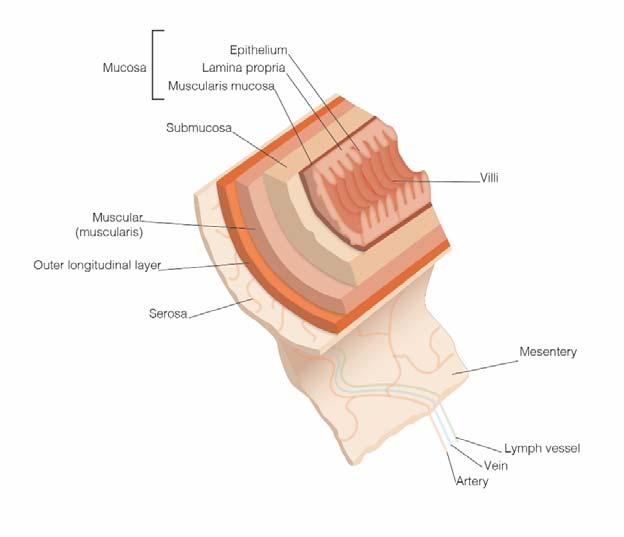
8. What are the three phases of gastric juice secretion?
Answer:
Gastric juice secretion occurs by stimulation of the vagus nerve, occurring before food ever reaches the stomach. The sight, smell and taste of food are the stimuli for this cephalic phase of the response. Once food enters the stomach, its presence stimulates the production of gastrin, a hormone produced in the pylorus of the stomach and in the duodenum. This hormone passes into the bloodstream, is circulated back to the stomach and enhances gastric juice secretion. Gastrin is secreted until the pH in the stomach drops to about 1.5. This is the gastric phase. It is not until the partially digested food, now known as chyme, moves into the small intestine that the production of gastric juice stops. The presence of acidic, fatty chyme in the small intestine releases secretin and cholecystokinin into the bloodstream. Once they reach the stomach, they inhibit gastric juice production and also reduce stomach wall contraction to slow stomach emptying in the intestinal phase.
9. Briefly describe how carbohydrates are stored in the body.
Answer:
Glycogen is the storage form of glucose in people. Glycogen is stored primarily in the liver, brain and muscles. It is metabolised with O2 in aerobic (with oxygen) metabolism to produce a storage form of energy called ATP (adenosine triphosphate).
